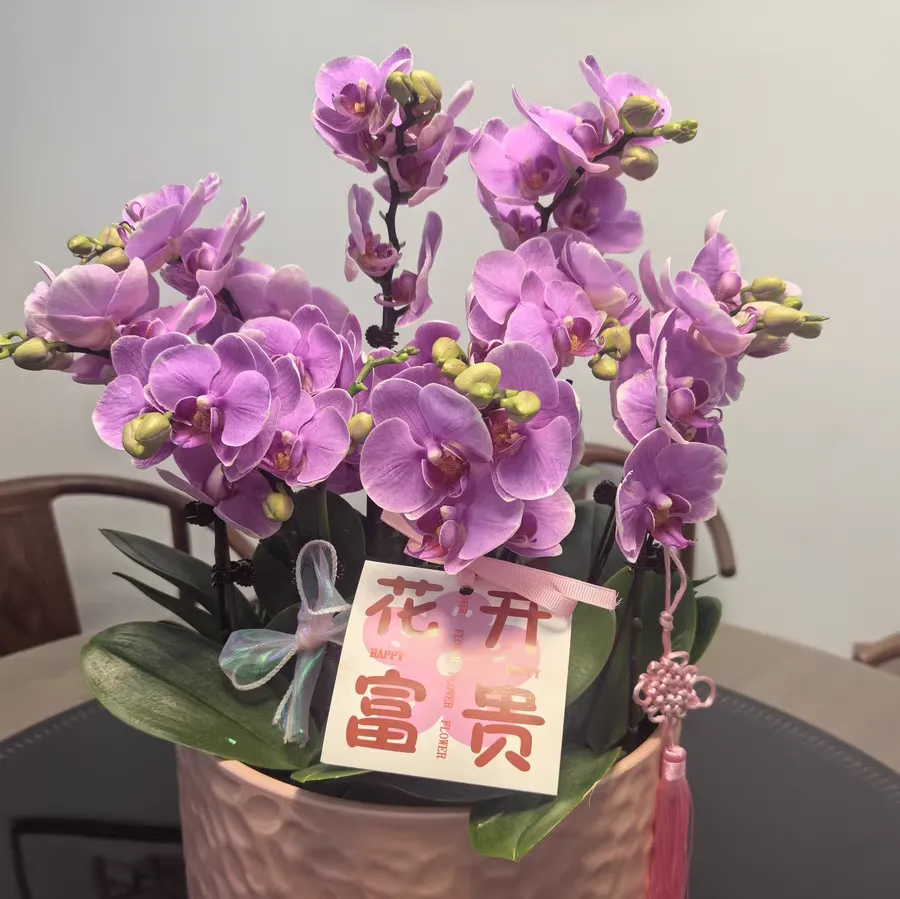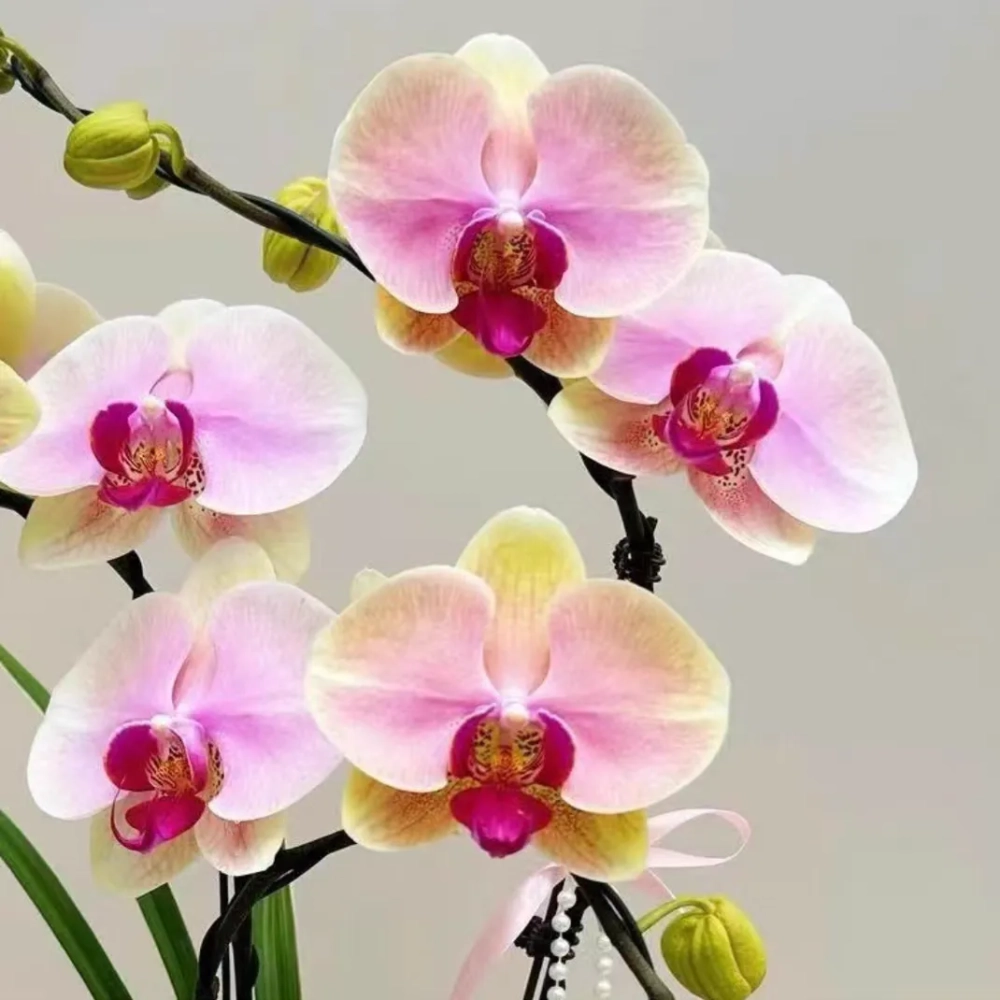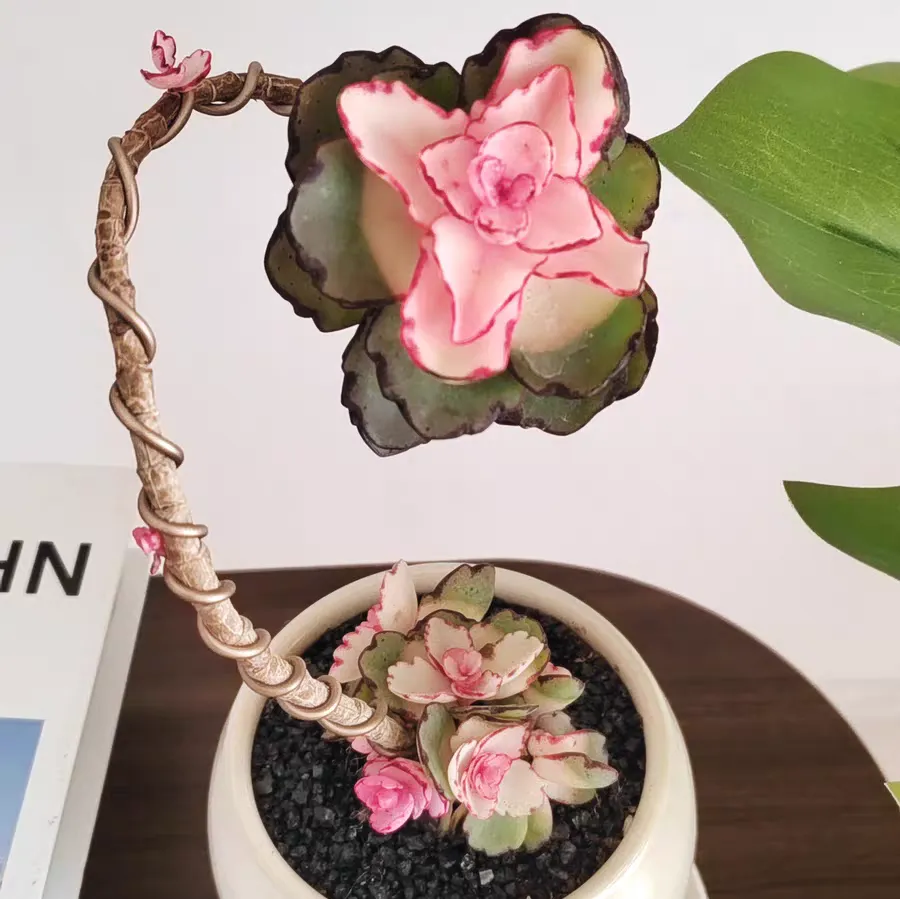I believe many people have a special preference for Phalaenopsis. However, its maintenance is a headache for a lot of people. Especially after December when winter comes, many flower - lovers encounter problems such as black spots on the leaves. Because the cold wind in winter is bone - chilling, and the plants will get damaged every time they are exposed to it. So, in the cold winter, how should we correctly maintain Phalaenopsis? What can we do to reduce the damage to the leaves?
In fact, when maintaining Phalaenopsis in winter, avoid spraying water on its leaves, because this behavior is likely to cause cold - induced spots. The reason is that the leaves of Phalaenopsis are delicate and sensitive. Especially when the temperature is relatively low in winter, the water droplets on the leaves are very easy to freeze. This process not only affects the appearance of Phalaenopsis, but also causes the leaves to wither and fall off.
So, how to avoid the occurrence of such cold - induced spots? It's best to move the plants indoors for maintenance in winter and ensure that the overall ambient temperature of Phalaenopsis is above 15 degrees Celsius. This can reduce the risk of water droplets freezing. At the same time, the humidity should also be increased. It is recommended to place some water basins or humidifiers around the plants, or use a humidifier to increase the air humidity around. After each humidification, it is necessary to keep the indoor ventilation environment to avoid the growth of bacteria in a too - closed environment. Remember, never spray water directly on the leaves.
In terms of maintenance, in addition to not leaving water on the leaves of Phalaenopsis, of course, don't place it outdoors to be exposed to the cold wind either. This can avoid the occurrence of cold - induced spots. At the same time, the watering frequency should also be controlled to prevent the roots from rotting due to over - wet pot soil. In winter, watering should follow the principle of keeping the soil slightly dry. Generally, watering once every seven days or so is enough. In terms of light, appropriate light can be given when it's warmer during the day, and at night, cover the plants with black plastic bags to prevent cold damage. Finally, in terms of fertilization, as the temperature drops in winter, the plants will enter a semi - dormant state. At this time, do not fertilize them at all and wait until spring of the next year to apply fertilizer. All in all, check the state of the plants more often in daily life and discover and deal with pests and diseases in a timely manner.
How to Cultivate Phalaenopsis at Home in Winter?

Share with
Tagged in :




Leave a Reply